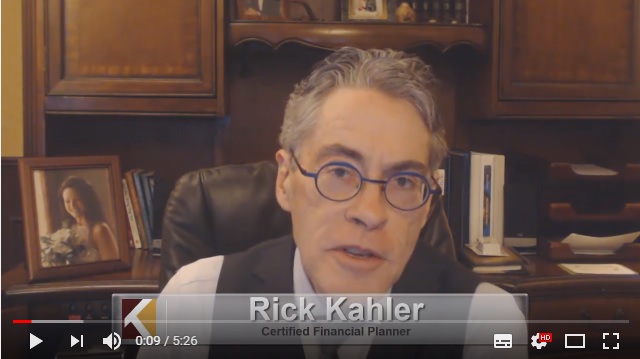The following blog is by Sophia Bera originally published in her website Gen Y Planning.
Picture the kind of life you want to have. Maybe you’ll retire at 40 to travel the world, or buy a loft condo in Brooklyn, or send your future kid to Harvard. Those dreams take money (a lot of it!), and can seem so far away when you’re still in your ramen-for-dinner phase. But if you make even a few small changes today, you’ll make those dreams possible.
When it comes to gaining real financial freedom — the kind where you have enough money to never have to worry about money — the fable about the tortoise and the hare still applies. Slow and steady wins the race!
Now is the time to create your financially independent future. Whether you set up automatic bank transfers to ensure you save money each month, or do some research into the best places to park your cash, your effort will add up big time in a few years — and it’ll keep you from having to play catch-up later on.
Begin Today for Financial Freedom Tomorrow
Want proof that starting now (even if you’re just taking baby steps) can have a powerful impact on your in the future? Let’s say you open a savings account with $1,000. The account earns 0.80% interest, and you deposit an additional $1,000 into it every month.
After 10 years, you’d save up about $126,000! If you tried to save up the same amount in just two years, you’d have to set aside $5,175 per month (you can test out different savings rates with this calculator). Setting aside smaller amounts of money over a longer period of time really adds up.
As to getting started, just take it one step at a time. Here are three you can take right now:
Step 1: Pay Down Debt
Tough love time: if you’re way behind on making credit card payments, it’s time to buckle down on your spending and pay that debt off. Because many credit cards have such high interest rates, if all you pay each month is the minimum balance, you’ll be paying that card off for years. And if you dream of buying a home or a new car one day, you’ll pay thousands more in interest on your mortgage or car loan if you have a low credit score.
Unfortunately, there’s no quick and dirty way to dig yourself out. Take a good look at where your money goes and cut out luxuries like cable TV and frequent dinners out. Put the money you save toward your debt — not into buying more stuff! Any dollar of debt you pay off is a dollar closer to sweet, sweet freedom. You can do this!
Step 2: Build Up Savings
It’s time to begin saving for two things: unexpected emergencies and expensive things you want in the near future. Look for a savings account that offers as high an interest rate as possible to maximize how much money you earn over time.
First, save up your emergency fund. While you pay off debt, set aside one month of your salary after taxes. Once your debt is gone, stash away three to six months of your salary. Try to save six to 12 months’ salary if you have extra financial responsibilities (like kids) or you rely on freelance work so your income is variable. This will give you a nice cushion in case you lose your job, need to pay for expensive car or home repairs, or rack up some medical bills. Keep this money accessible in a savings account, but don’t touch it unless you have to.
Second, think about what you want to do in the next few years. Do you want to buy a house? Backpack around Europe? Start your own company? Save up for that, too. Having a goal to work toward is really motivating.
If you don’t have a specific goal in mind right now, that’s okay. Get started by thinking of goals that’s SMART: specific, measurable, actionable, realistic, and timely. For example, you might want to plan a big trip for your 30th birthday, and you’re 27 now. Pick a location, research the logistics, start budgeting, and put some money away a little at a time. In three years, you’ll be celebrating in style!
Step 3: Invest in Your Future
Retirement seems so far away for Gen Y. But if you take advantage of the decades you have before you stop working and the retirement accounts available to you, you’re going to build up a substantial nest egg for yourself.
Let’s build upon the earlier example showing how much you can earn by regularly saving up over a long period of time. Say you open up a Roth IRA with $1,000 and contribute $5,500 per year Assume your account earns an 8% annual return. After 40 years, you’re sitting on $1.5 million!
Millennials should consider these 3 investment tools to help invest in the future:
- Employer-Matched 401(k): If your job offers a match on their 401(k) plan, take advantage because that’sfree money. Contribute at least enough to get the employer match, and contribute even more than that if you can.
- Roth IRA: Look for a brokerage with a low initial investment, and then contribute the annual maximum of $5,500. You don’t have to pony this up all at once! You can split your contribution into smaller amounts over the year, or contribute less than the maximum if that’s all you can afford right now.
- Stocks and Funds: After you set up retirement accounts, if you’re sitting on some money you don’t need for at least five years, consider opening a low-fee brokerage account and investing in stocks or mutual funds. Ideally, you’ll earn a higher interest rate over the life of the account than you would with a savings account, making your money work harder for you.
Easy peasy, right? I know this can seem daunting now, but I’m here to help if you’d like more guidance. When you throw your spectacular 50th birthday party on the deck of your yacht, you’ll be glad you started saving money when you did.
 About Sophia Bera: Sophia Bera, CFP® is the Founder of Gen Y Planning and is a financial planner for Millennials. She’s passionate about helping people in their 20s and 30s across the with their money. She is a contributor for AOL’s Daily Finance website and has been quoted on various websites and publications including Forbes, Business Insider, Yahoo, Money Magazine, InvestmentNews, Financial Advisor magazine, and The Huffington Post. She was named one of the “Top Financial Advisors for Millennials” by the website: www.MoneyUnder30.com. Sophia is a sought after speaker and presenter and is an active member of the Financial Planning Association. In her free time, she enjoys performing as an actor/singer and traveling the world with her husband, Jake. Follow her on Twitter @sophiabera or sign up for the Gen Y Planning Newsletter to stay up to date on financial articles geared towards Millennials.
About Sophia Bera: Sophia Bera, CFP® is the Founder of Gen Y Planning and is a financial planner for Millennials. She’s passionate about helping people in their 20s and 30s across the with their money. She is a contributor for AOL’s Daily Finance website and has been quoted on various websites and publications including Forbes, Business Insider, Yahoo, Money Magazine, InvestmentNews, Financial Advisor magazine, and The Huffington Post. She was named one of the “Top Financial Advisors for Millennials” by the website: www.MoneyUnder30.com. Sophia is a sought after speaker and presenter and is an active member of the Financial Planning Association. In her free time, she enjoys performing as an actor/singer and traveling the world with her husband, Jake. Follow her on Twitter @sophiabera or sign up for the Gen Y Planning Newsletter to stay up to date on financial articles geared towards Millennials.





0 Comments